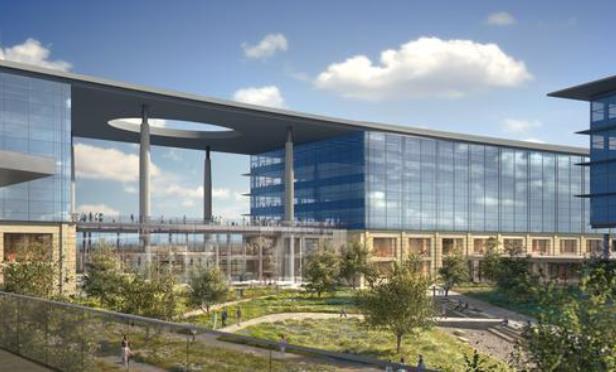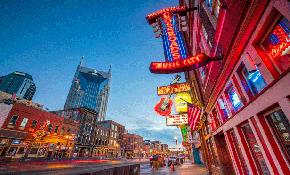 Toyota’s new North American headquarters in Plano, TX. The community embodies the embody the evolution of suburbs into amenity-rich environments, says Marcus & Millichap.
Toyota’s new North American headquarters in Plano, TX. The community embodies the embody the evolution of suburbs into amenity-rich environments, says Marcus & Millichap.
CALABASAS, CA—Without a great deal of fanfare, suburban office properties have been garnering a greater share of investors’ attention recently, says Marcus & Millichap. However, neither the firm’s special report on the sector nor Al Pontius, SVP/national director, specialty divisions at Marcus & Millichap, would have you believe that the suburbs are undergoing a renaissance after being eclipsed by CBDs over the past several years.
“It’s never really one been one versus the other, even though it has felt that way,” Pontius tells GlobeSt.com. “The truth of the matter is that there are way more people who work in suburban buildings than in downtown buildings, because the sheer footprint of what you would describe as suburban is significantly larger than what would be categorized as CBD.”
From the standpoint of fundamentals, CBD is often considered “stronger,” says Pontius. If “stronger” is defined as higher occupancies and a faster rate of rent growth, both are true in the case of CBDs. Even so, “the suburban office market did not roll up and go away,” he says.
The numbers bear this out. While a 10-figure trade of a Midtown Manhattan tower is going to grab the headlines, Marcus & Millichap’s report notes that just 17% of 2009 deals occurred in CBD markets. The number grew to nearly one-quarter of 2014 transactions but tapered off to 21.7% of investment sales activity for 2016. Simple math suggests that even at the recent zenith of CBD office sales activity, the suburbs still accounted for about three-quarters of the market.
The suburbs contain the greatest share of office space in part because they also contain the greatest number of people. Marcus & Millichap points out that in 2015, 64% of US households resided in the suburbs.
“We understand the appeal of the CBD in terms of access to transportation, restaurants and nightlife, whereas if you’re in a vintage suburban office building with lots of parking, you may have to jump in your car and drive 20 or 25 minutes to get to these things,” says Pontius. Yet when a stronger economy is coupled with a maturing Millennial workforce—now more inclined to start a family, and arguably more inclined to leave the urban environment to do so—the result is declining vacancies and asking rents that are now 7% above the prior 2008 peak.
In many cases, the vintage, isolated suburban campus cited by Pontius is giving way to the newer model. “Office markets in the suburbs are transforming to meet the live-play-work life style in order to secure and retain the next generation of talent,” the report states. New projects often reflect the changes that Millennials have brought to office and work cul ture.
“On-site amenities including access to recreational activities, healthcare clinics and day care centers have cropped up in many new suburban office developments, helping create the work-life balance desired by many professionals,” according to the report. “Additionally, companies are targeting spaces with nearby access to dining, retail and entertainment, further generating the sense of community that young professionals value.”
The report cites two examples of two suburban markets that embody the evolution of suburban communities into amenity-rich environments: Plano, TX, outside of Dallas; and Tempe, AZ, a college town in the suburbs of Phoenix. Both have attracted large headquarters operations as a result: Toyota’s North American base in the case of Plano and a State Farm regional headquarters in the case of Tempe.
To these two examples Pontius adds a third: the transformation of a 1970s-vintage property in Basking Ridge, NJ. The Wall Street Journal reported earlier this month that a joint venture of Rubenstein Partners and Onyx Equities acquired the property at 211 Mount Airy Rd. for $12.5 million in 2013, spent $11 million to overhaul it, leased it entirely to pharmaceutical company Daiichi Sankyo Inc. in 2016 and recently sold it to Harbor Group International for $98.5 million, about four times the amount invested by the JV. At a single-asset level, the repositioning and sale “speaks very nicely” to the suburban evolution trends described in the report, says Pontius.

















 Copyright © 2024 ALM Global, LLC. All Rights Reserved.
Copyright © 2024 ALM Global, LLC. All Rights Reserved.